To Be King –Christine Dixie
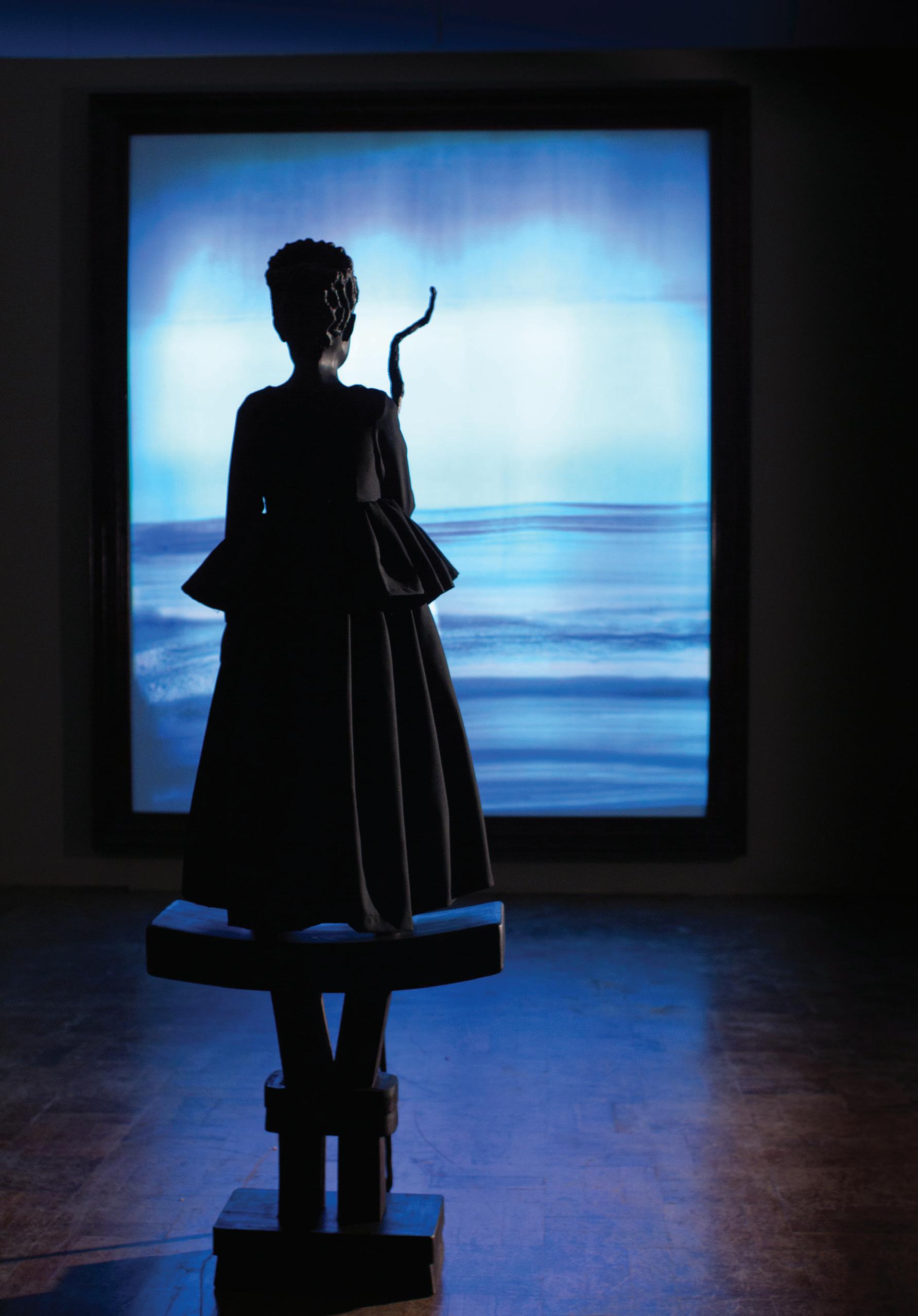
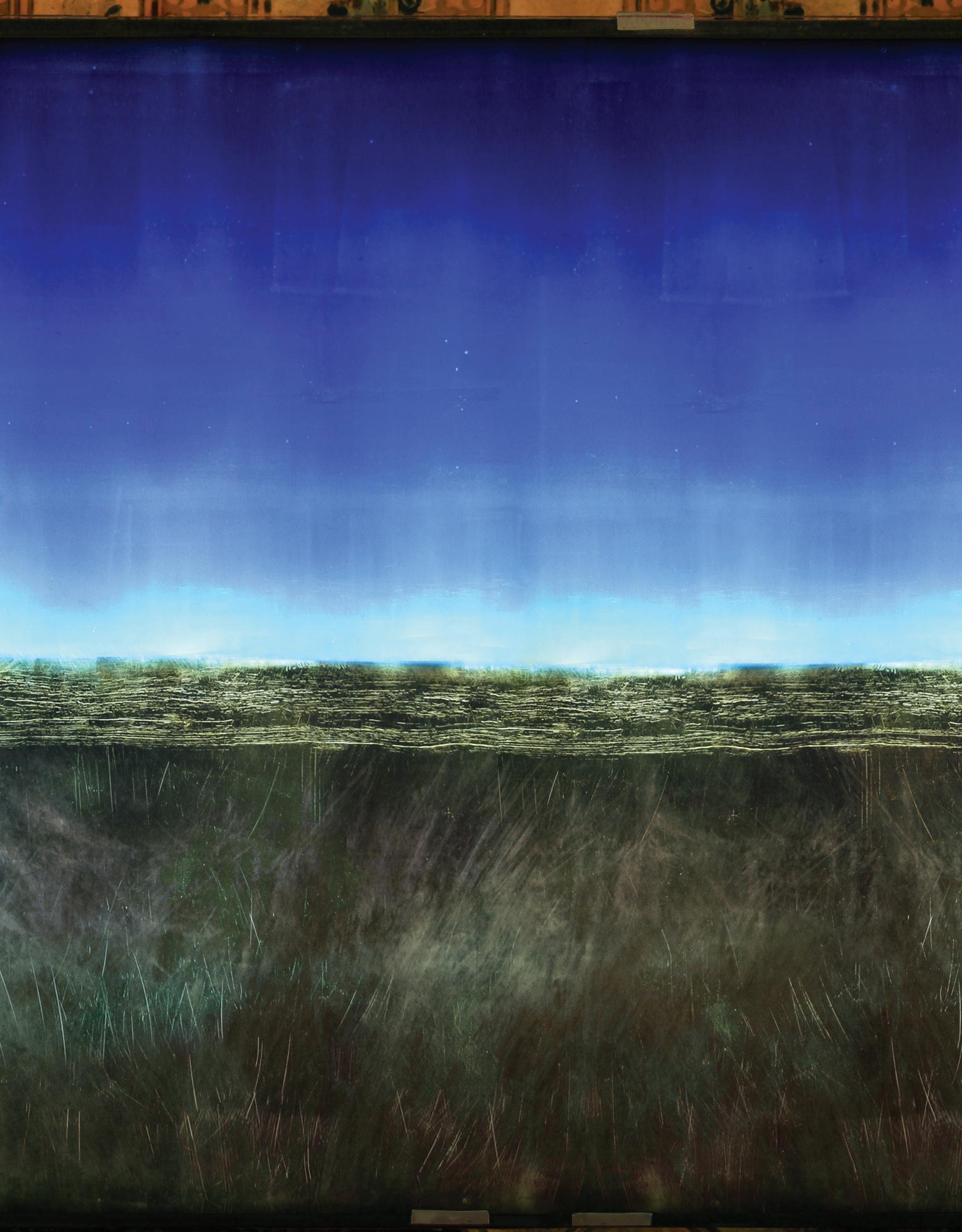
To Be King
It‘s good to be king, if just for a while
To be there in velvet, yeah, to give ‚ ´em a smile
It‘s good to get high and never come down It‘s good to be king of your own little town
It‘s good to be King Words and music by Tom Petty
Malaria
© Christine Dixie, 2014
Production Credits
To Be King was created in collaboration with Mark Wilby.
Mark Wilby Video Editor
Samantha Munro Animation Sequencing
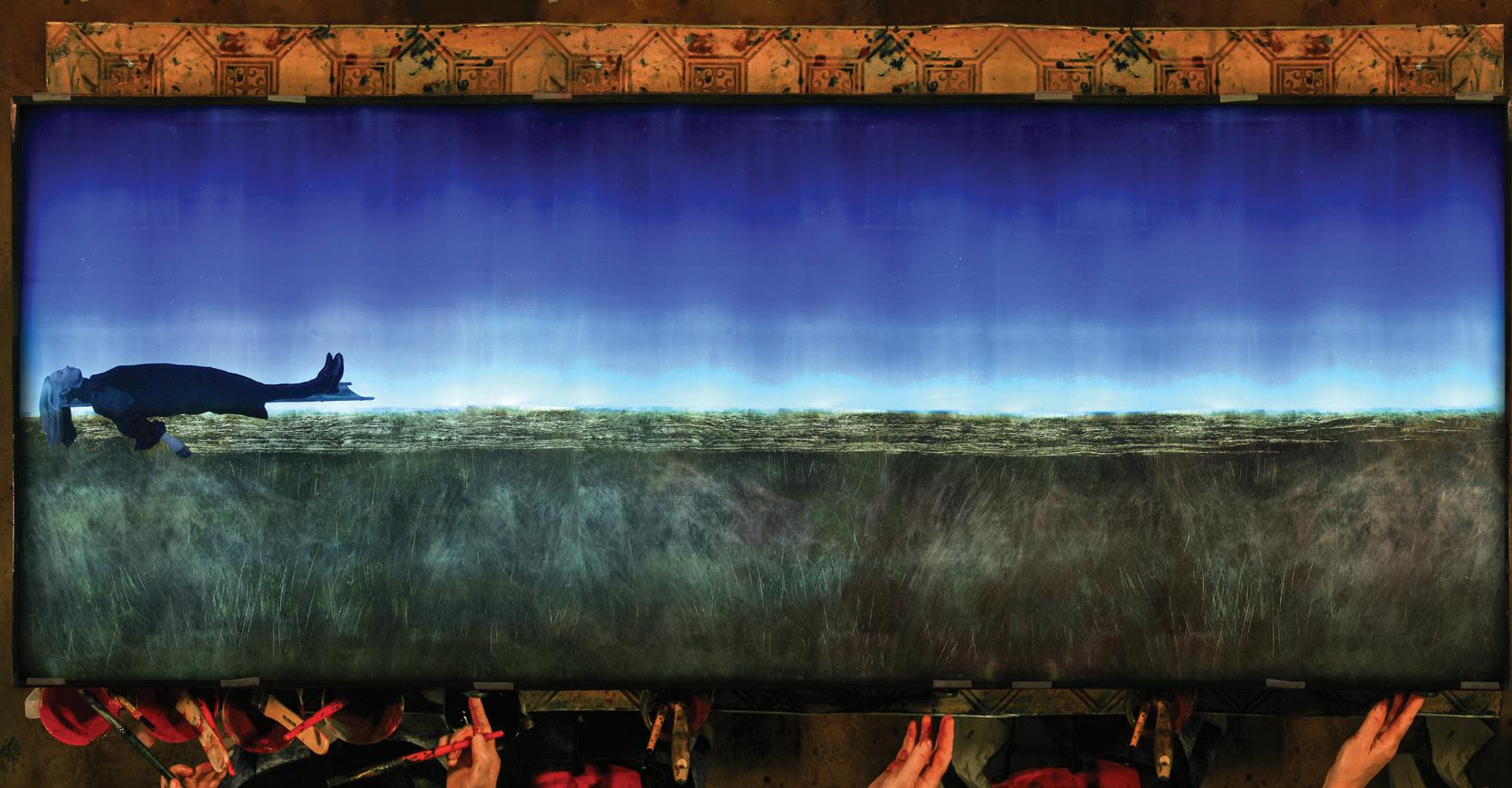
Junitha Els Costume Design
Jared Lang
Lotta Matambo Voice
Composition
Corinne Cooper Sound Composition and Engineering
Lunga Heleni Recording Studio Assistant
—
1 —
Vocal
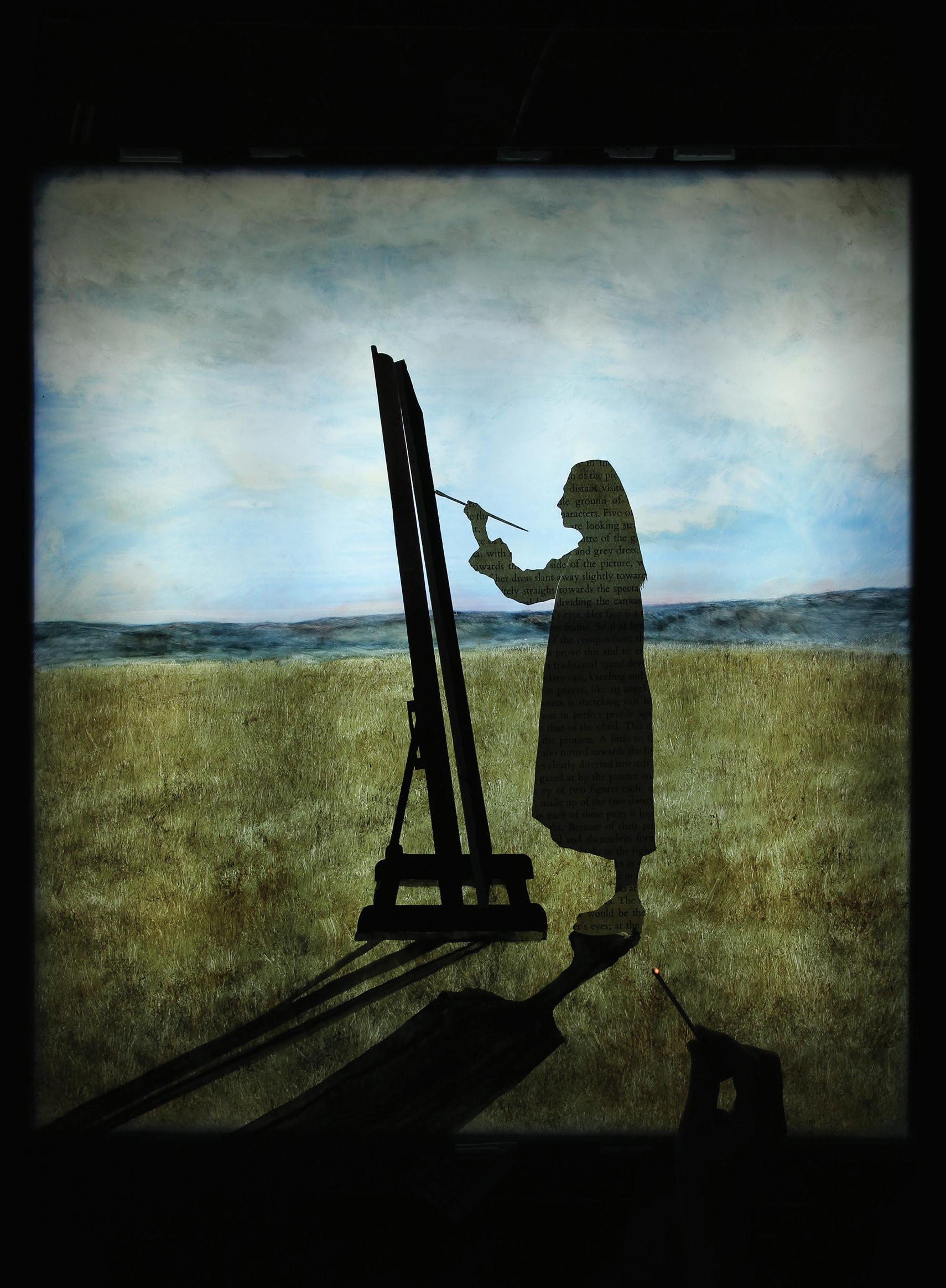
2Velasquez at Burnt Kraal © Christine Dixie, 2014
Installation
This installation forms part of a critical reflection on the museum as a space. The different components are designed to communicate ideas which are associated with the display of a ‘masterpiece’ in a museum.
Stop-frame animation/video
• Duration: 15minutes, 45 seconds
An interweaving of stop-frame animation using a monotype printing process and live-footage.
• Dimension: 2 300 x 2 700 – back projection.
The scale of the projection is similar to the scale of the original painting.
• Dimension with frame: 2 600 x 3 000
The frame is made of wood and has been designed to imitate the frame of Las Meninas in the Prado, Madrid.
Sound
The soundscape that accompanies the work is an original composition and recording – it is an interweaving of synthesizer and voice. Played with stereo soundtrack from behind the projection.
Sculpture
• Dimension: 55 x 60 x 1 740
• Materials: Urethane resin, fabric and wood
• Placement
The sculpture, The Black Infanta, faces the projection and is placed approximately 4m from the projection.
—
Trade Ship, Blessed © Christine Dixie, 2014 3
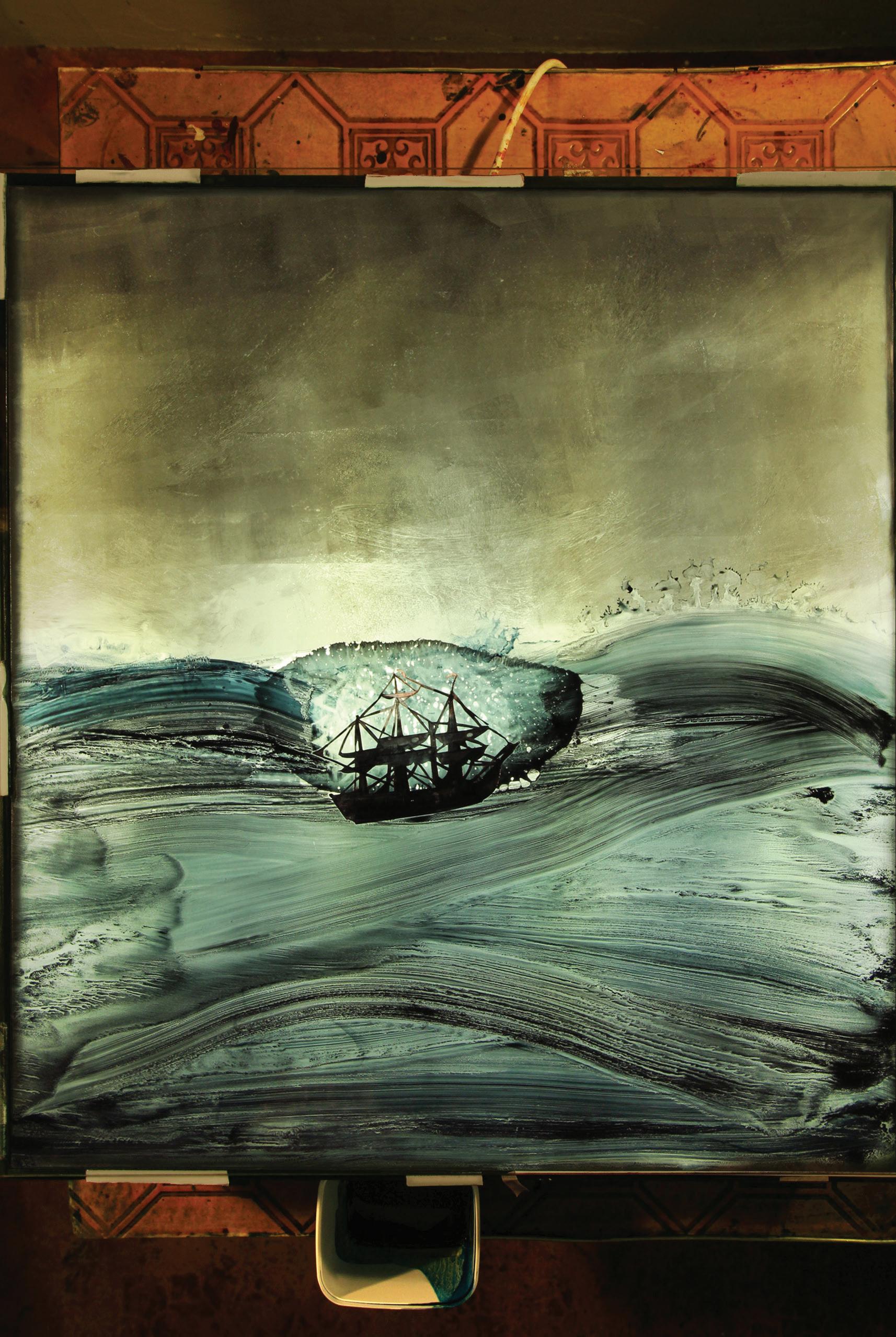
4
Narrative Description
To Be King is informed by the essay ‘Las Meninas’ which Michel Foucault published in 1966 as the first chapter to his book The Order of Things.
Foucault in his description of the painting by Velásquez suggests (amongst other things) that it is through language, the taxonomy of the day, that things are ordered. This order, particular yet tenuous, is dependent on who is in control of the gaze, who is ‘king’.
To Be King situates itself as a destabilizing narrative in which the king is ‘dethroned’. Positioning characters and spaces from the periphery in the place from which the dominant gaze originates points to the possibility of a different order of things and highlights the fragility of the established and dominant order. —
The sculptural component, the Black Infanta embodies everything the Spanish King, Philip IV is not. Her pose imitates that of the seventeenth century portrait paintings of royal children. She is placed on an enlarged headrest, an object associated with sleeping, dreaming and the unconscious and holds instead of a sceptre, orb or sword, a stick made of Port Jackson willow.
The Black Infanta’s placement in front of the ‘painting’ places her in the role reserved for the king for whom Las Meninas was originally made and who also stands outside the frame of the painting. Completing the circuit of gazes is the museum guard who role is witness to the viewer looking at the ‘painting’. In addition he functions as an ironic indicator of status, an embodiment of the value placed by the cultural centre on a ‘masterpiece’.
—
—
5
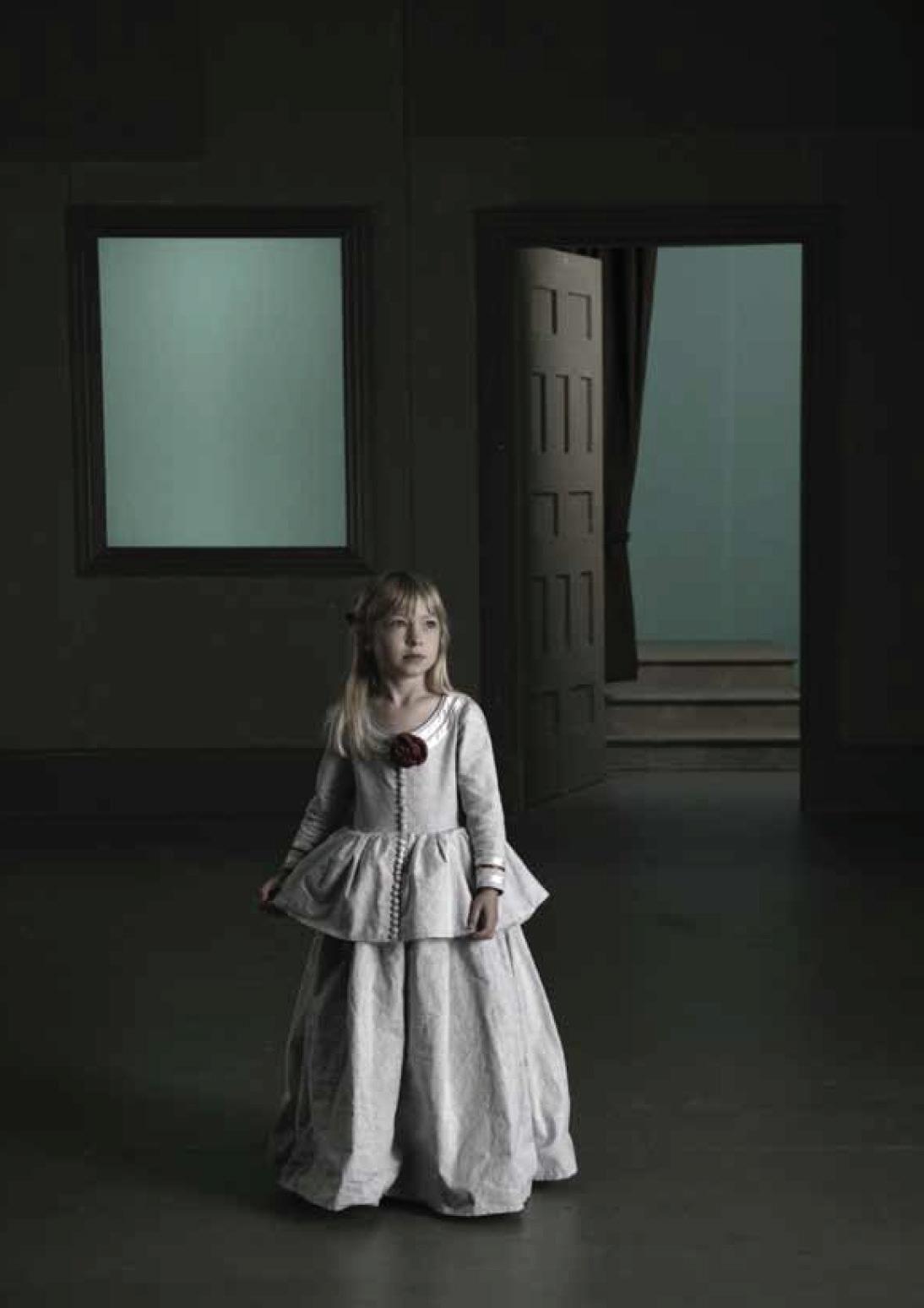
6© Christine Dixie, 2014
Biography
Christine Dixie is an established South African artist, who has regularly exhibited in that country, the US and Europe. She is primarily a printmaker, but her art also finds expression through films or elaborate installations.
Her work challenges the ways gender roles have been historically conditioned by society, myths, and image-making. The manifestation of the colonial history that haunts the town of Makhanda, (the Eastern Cape city where she lives) has compelled her preoccupation with Europe’s legacy in Africa. Her practice and aesthetic rely on archival imagery and in-depth research.
Her international group shows include Earth Matters: Earth as Material and Metaphor curated by Dr. Karen Milbourne (2007) and The Divine Comedy: Heaven, Purgatory and Hell Revisited by Contemporary African Artists curated by Simon Njami (2012), both of which opened at the Smithsonian Museum of African Art. Her installation To Be King was part of the Personal Structures exhibited at Palazzo Bembo in Venice (2017) and was shown at the International Festival at the Coronet Cinema in London and the Kaunas in Art Festival in Lithuania (2018).
Current exhibitions include, @ Bathurst St., Makhanda, which opened in March 2022 at the Gallery of the SARChi chair at the University of Johannesburg, Blueprint for the DisOrder of Things a body of work which continues themes that are linked to her To Be King installation opened in April 2022 at the Wits Art Museum. Her series of prints Harbouring Fanon is on at the Graham Contemporary Gallery in Johannesburg.
Her work is included in national and international collections including The New York Public Library, The Smithsonian National Museum of African Art, The Standard Bank Gallery, The Johannesburg Art gallery, The Durban Art Gallery, the Iziko National Museum of South Africa, and the Nelson Mandela Metropolitan Museum of Art.
—
7
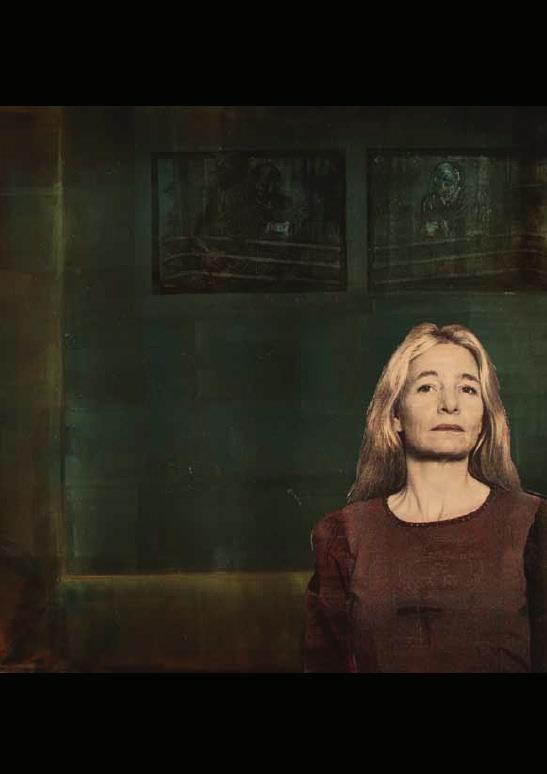
© Christine Dixie, 2014 8
To
Ute Fendler, Nicole M. Klug
Sigrid Horsch-Albert
Relations: Sabine Greiner, Inken Bößert

Sefer Polat, Steffen Riess, Jens Wagner
to: Ulf Vierke, Katharina Greven, Katharina Fink, Lena Naumann, Renate Crowe, Alexandra Kuhnke, Felicia Nitsche, Manuela
Ship, Watched,
Christine Dixie,
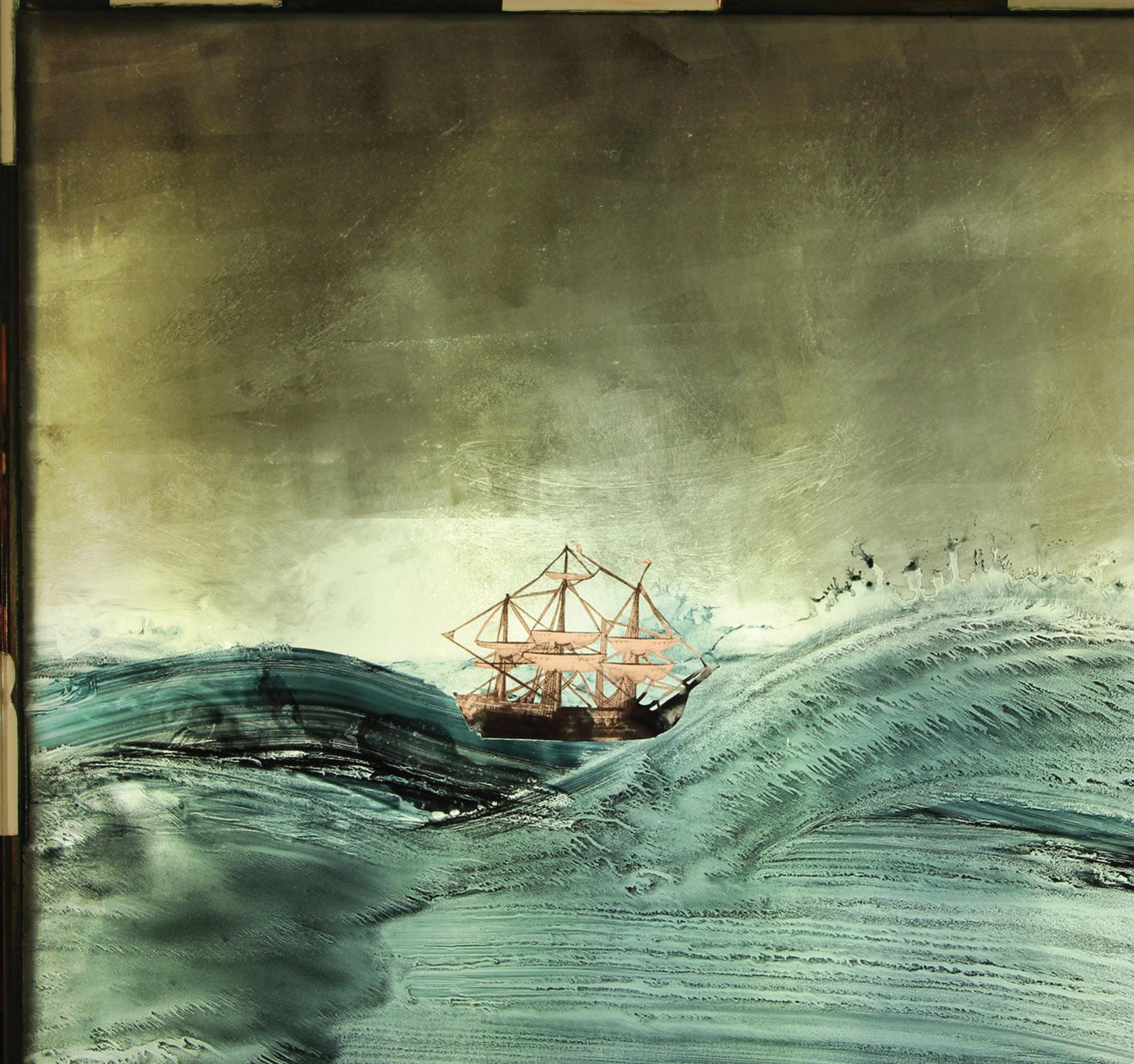
—
Be King 11.05. – 09.07.2022 Curation:
Logistics:
Press/Public
Technical:
Thanks
Pape This exhibition was financed by the Africa Multiple Cluster of Excellence and the DFG Trade
©
2014 Wölfelstr. 2, 95444 Bayreuth Wed-Sun, 13:00-17:00









